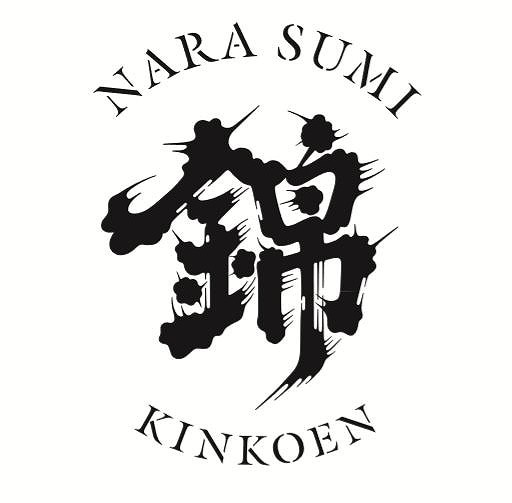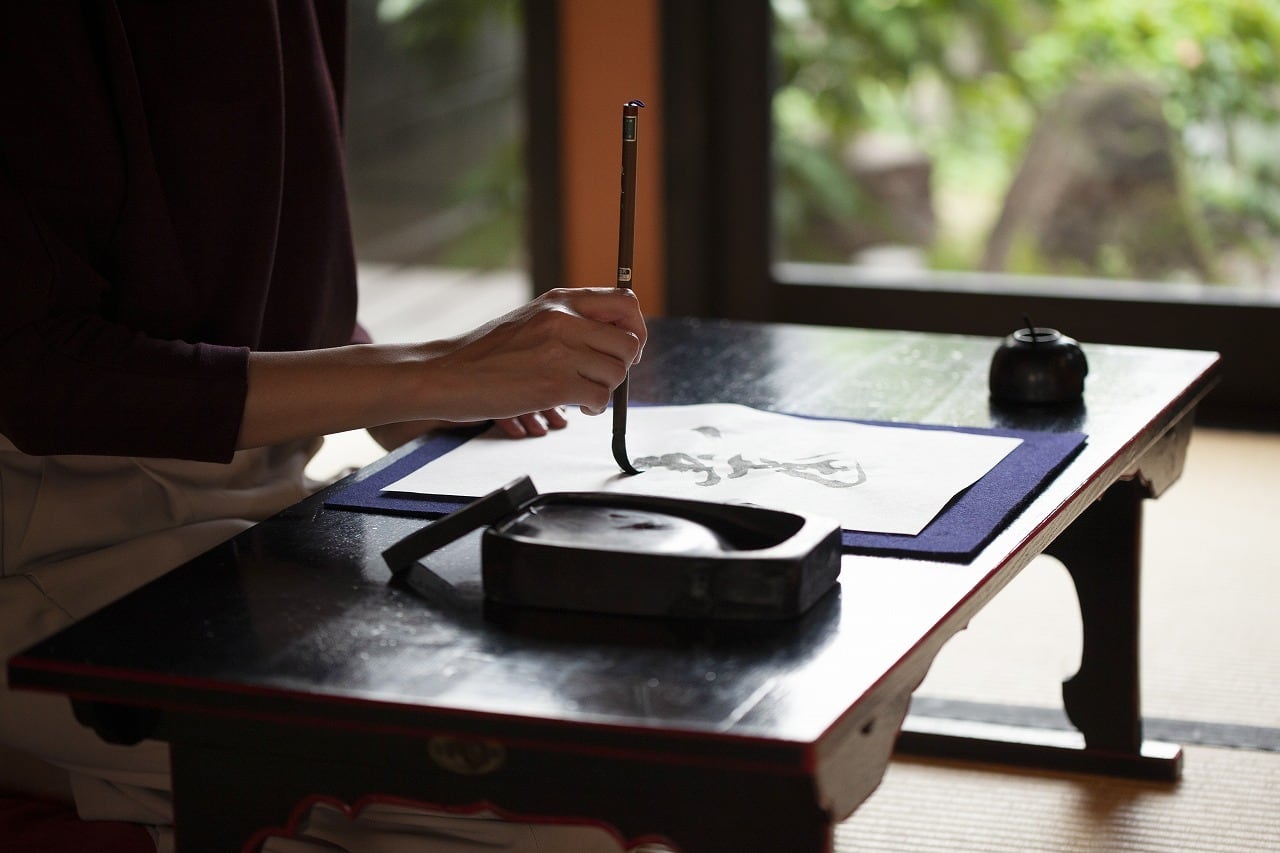Nara Sumi is Art of Eastern culture
Nara Sumi, or ink made in Nara, is made through a traditional method that goes back over a thousands years, that has been hardened into a stick so that it is easier to carry around. At its core, its ingredients are simply soot and gelatin, with spices added to give it a nice aroma. However, it is only through these months-long, traditional techniques that we can produce sticks of Nara Sumi that people have used to write with for more than a thousand years.
The form of the ink itself is just as beautiful as it is on paper. While it is still raw, we using wooden molds to give the ink subtle, detailed patterns deeply connected with Japanese culture and the history of Nara.
It is said that Nara Sumi can be used for up to 1,000 years. From shaping it in the first moment when it is raw to writing with it 1,000 years later, the power of expression within Nara Sumi is limitless. Whether for writing or decoration, we hope you feel the raw, true beauty of Nara Sumi.
-

It was approximately 150 years ago when our ancestors opened their very own workshop, Kinkoen.
-

Kinkoen continues the tradition of making Nara Sumi ink with soot, gelatin, and perfume.
-

Our workshop is located in historic Naramachi, in the middle of Nara City.
Sumi Ink Stick Production Process
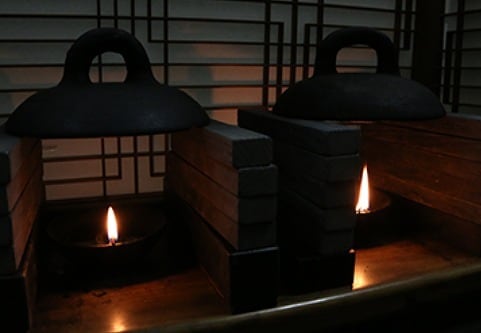
1. Soot Removal
Vegetable or sesame oil is burned in an earthenware pot called a “kawarage”, and soot forms on the lid above it. We remove the soot from this lid to use for our ink.
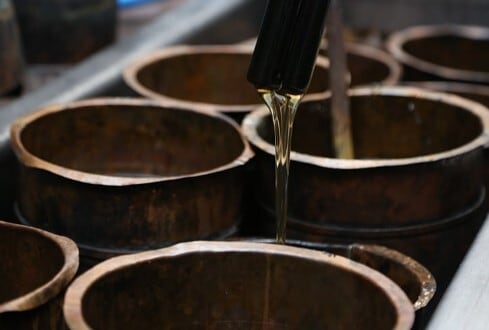
2. Gelatin Solution, Ingredient Stirring
We mix the water and gelatin. And we melt those together in boiling water. We stir this for four hours to make the gelatin solution. Then we add the soot.
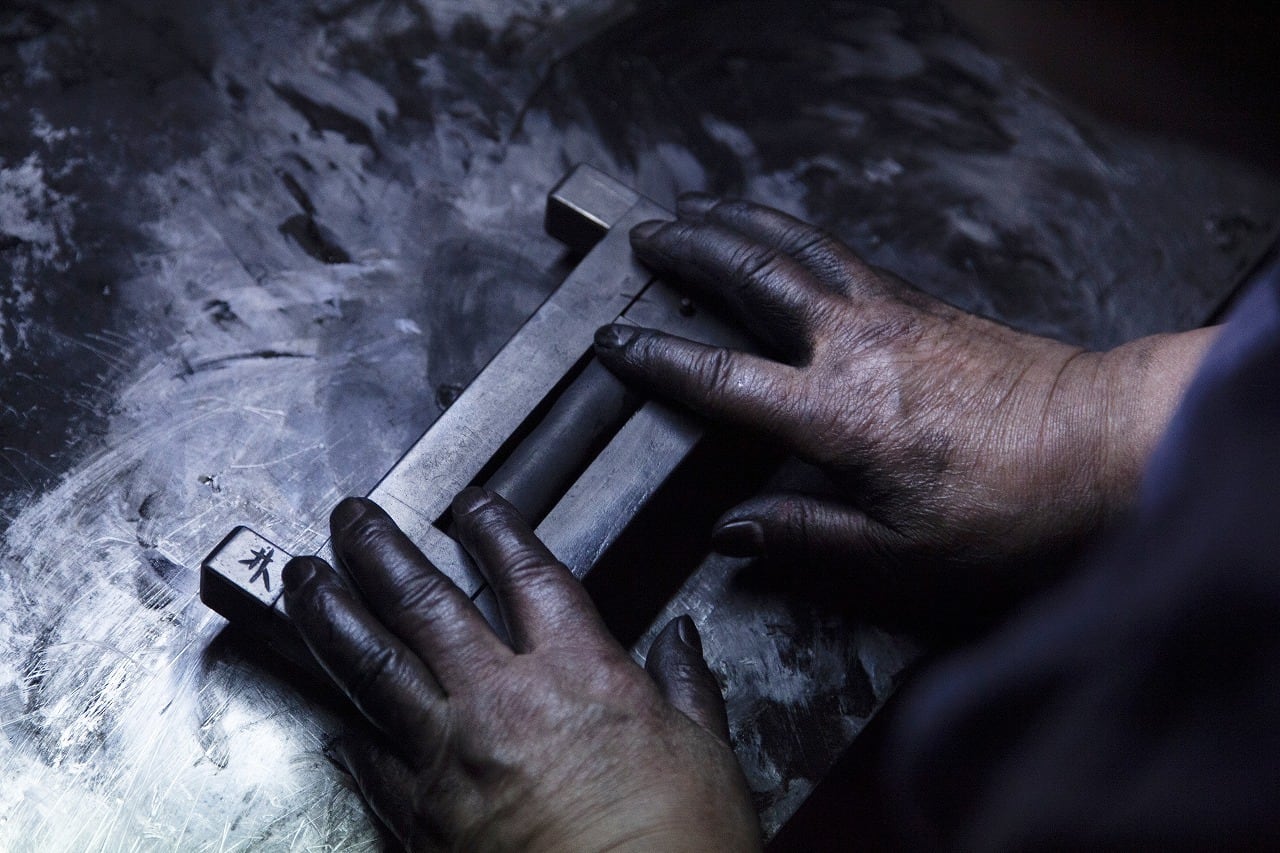
3. Wooden Patterns and Molds
We use molds made from the wood of a pear tree to add certain patterns and shapes to the raw ink.
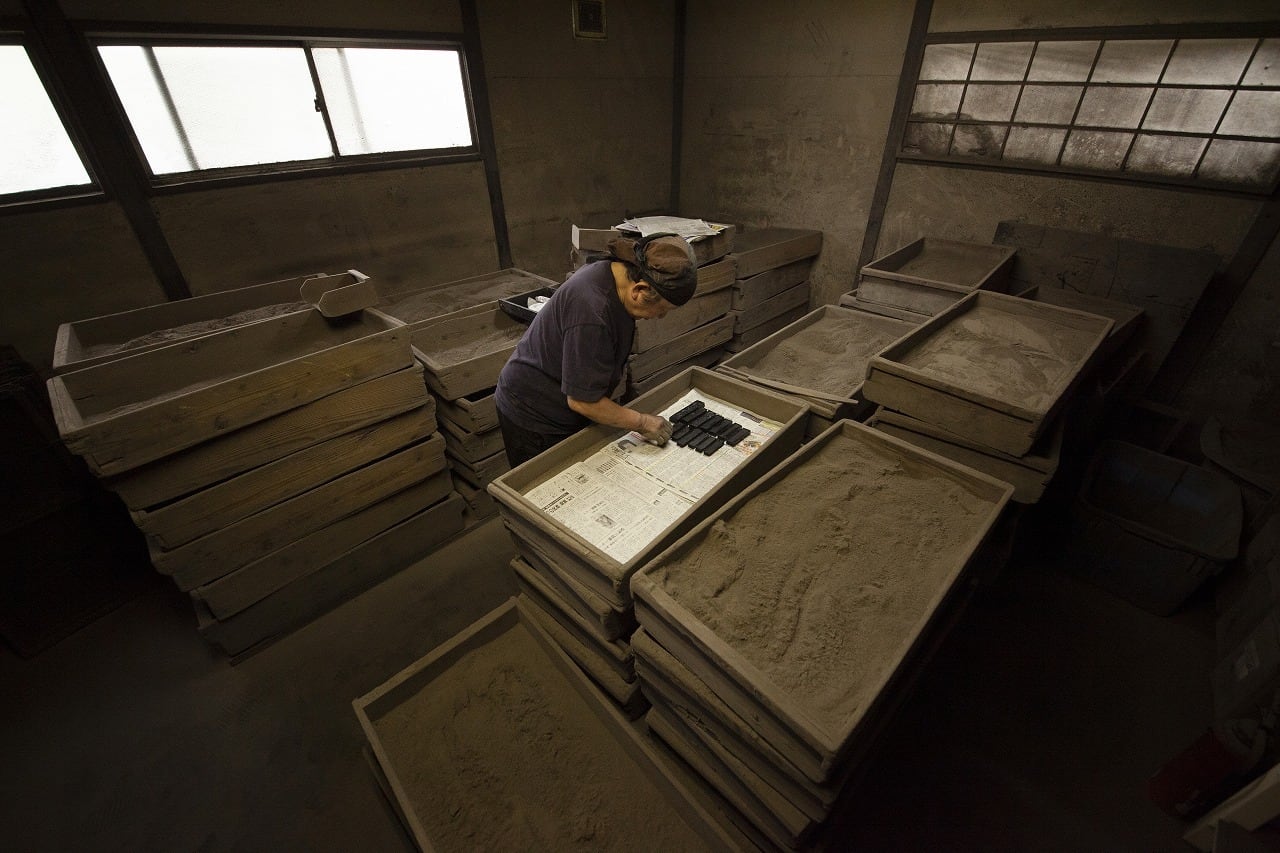
4. Ash Drying
First, we wrap it in newspapers, bury it in wood ash with a small amount of water, and the rebury it in gradually drier wood ash. It takes about 2-3 weeks to dry in the ash.

5. Natural Drying
When 60~70% of the water is removed, we move on from using wood ash to letting the ink dry naturally. It takes about six months to dry.
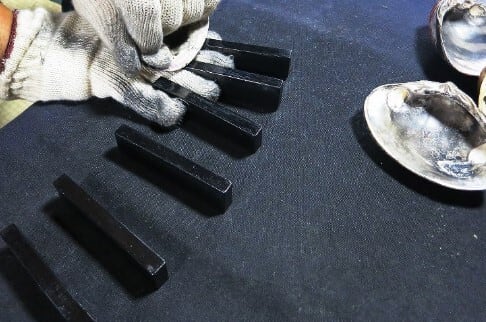
6. Polishing
We wash it with water to remove any ash or other material from the surface.
Then, after painting on the glaze, we quickly scorch it with charcoal, and then polish it with a clam shell.

7. Color
After the polished ink has been washed, we remove the water by placing it in criss-crossed stacks for three days to a week and let it air dry.
Our Sumi Ink Stick
We deliver ink to countries all over the world. Shipping is free.
(※However, we may not be able to deliver to some areas.)
-

Koki (Light) 光輝
¥5,150
For Kanji, Mixed Kanji and Kana Large CharactersIn addition to the moderate black color of thick black ink, light black ink has a slightly old color, and it is a very well-balanced product with bleeding, light and shade, and the appearance of the baseline. A unique design that covers all four sides with Kikuzu. The most popular product of Kinkoen. Weight about 45g
-

Asa (Hemp) 麻
¥2,950
For Kanji, Kana, Sutras A calm black color that gives a soft impression. Comfortable to polish, for both light and shade. Innocently, only Mabushi looks elegant on both front and back sides. Weight about 15g.
-

Kannon (Goddess of Mercy) 観音
¥9,550
For Kanji, Mixed Kanji and Kana, Large Characters The bleeding is very clear. Also, the color is vivid black. The difference between dark ink and light ink is clear. On the back is a figure of Gyorankannon, which is one of the 33 Kannon. Weight about 75g
-

Shien (Purple Soot) 紫煙
¥3,500
For Mixed Kanji and Kana, Kana, Large Characters, Both Characters and Pictures For both light and shade. Bright blue in both shades. Clouds on the front and back. The most popular product of blue ink with excellent cost performance. Weight about 30g
-

Tensho-ryu (Dragon Climbing to the Heavens) 天昇龍
¥10,540
For Kanji, Mixed Kanji and Kana, Large Characters, Both Characters and Pictures, Sutras. A deep black color peculiar to pure pine smoke. You can also see the depth of lightness. Hexagon whose shape is rarely seen elsewhere. A dragon dances all over. Weight about 23g
-

Juki (Long-living Turtle) 寿亀
¥2,950
For Mixed Kanji and Kana, Kana, Both Characters and Pictures Comfortable to polish, pale blue. Dark ink is clear. A well-balanced and versatile blue ink. A simple design with only a turtle figure without a name. Weight about 15
-
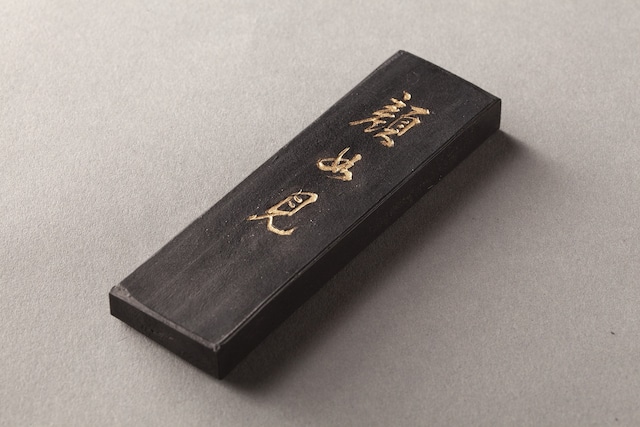
Ganjoken (Looks like a face) 顔如見
¥5,150
For Mixed Kanji and Kana, Kana, Large Characters, Both Characters and Pictures A gentle blue color that is slightly gentle on the whole. There is a statue of Guan Yu, a hero of the Three Kingdoms, on the back with light ink. Weight about 38g 日本語版オンラインショップはこちら https://kinkoen.shop/?pid=123939760
-

Kigan (Wild Goose Coming Home) 帰雁
¥5,150
For Kanji, Mixed Kanji and Kana, Large Characters For both light and shade. Black that is comfortable to polish and has a slightly muddy texture. It features a thick goose figure. Weight about 55g 日本語版オンラインショップはこちら https://kinkoen.shop/?pid=153728362
-

Saimen (Picked Cotton) 採綿
¥11,300
For Kanji, Mixed Kanji and Kana, Large Characters Even though the width of the shade is a little narrow, there is an old color in the light ink. The drawing of "picking", which is the state of the weaving produced in China, is attractive. Weight about 45g 日本語版オンラインショップはこちら https://kinkoen.shop/?pid=153726259
-

Oban (an ancient currency in Japan) 大判
¥3,500
For Kanji, Fine Characters, Sutras It is comfortable to polish and the more you use it, the better the blurring. For both large and small print. Very large gold coin of ancient in japan shape. Weight about 30g
-

Gyokuryu-sai (Child of Dragon) 玉龍齊
¥9,550
For Kanji, Kana, Fine CharactersDeep red ink and delicate light ink with a little muffled depth in the back. It is drawn as if the dragon, the child of the dragon, wraps around the four sides. Weight about 23g
-

Botan-jishi (Peony and Boar) 牡丹獅子
¥6,800
For Kanji, Kana, Fine Characters Good bleeding, glossy black and delicate light color. It is depicted as a safe place for the lion to cure the insects in the lion body (a pest that threatens the life of the lion, the king of beasts) with the night fog dripping on the peony on the back. Weight about 15g
-

Shihoryu (Four Sides of Dragons) 四方龍
¥9,550
For Kanji, Mixed Kanji and Kana, Large Characters. Good bleeding, good color balance, and a calm shade. There are bold carved dragon figures on all sides, and it is a very popular product due to its design. Weight about 65g
-

Ukin (Bird Gold) 鳥金
¥19,780
For Kanji, Mixed Kanji and Kana, Large Characters, Both Characters and Pictures. Comfortable to polish. The light and dark shades are good, and the color of the ink is slightly blue, but the color is a bit younger. Weight about 45g
-

Senzaimatsu (Thousand-Year Pine) 千載松
¥13,620
For Kanji, Mixed Kanji and Kana, Large Characters, Both Characters and Pictures Dark ink is jet black and light ink is delicate, but the range of color from dark ink to light ink is slightly narrow. There is a very powerful old pine tree on the back. Weight about 30g
-

Oh-tori (Transformative Giant Bird) 鳳
¥10,540
For Kanji, Mixed Kanji and Kana, Large Characters, Both Characters and Pictures It is a little heavy to polish, but it has a good black color and a little bluish tint. A clear baseline can be seen and the blurring is good. There is a phoenix on the back. Weight about 23g
-

Kyushi-en (Garden of Nine Baby) 九子苑
¥19,780
For Kanji, MixedKanji and Kana, Large Characters, Both Characters and Pictures, Sutras Comfortable to polish. A deep black color that looks like pure pine smoke. A fun drawing in which the nine children play with each other deeply carved. Weight about 45g
-

Showa Ink (named after Emperor Showa) 昭和墨
¥9,550
For Kanji, Kana, Fine Characters A glossy reddish black color unique to sesame oil smoke. For both light and shade. On the back is a horse figure by a Japanese painter from the Edo period. Weight about 23g
-

Kinkaku-seifu (Pure wind of a crane’s koto) 琴鶴清風
¥9,550
For Kanji, Mixed Kanji and Kana, Large Characters Elegant and calm black. Light ink feels refreshing. Bleeding is also very beautiful. Three-dimensional pine tree and two crane drawings on the back. Weight about 75g
-

Doba (Copper Horse) 銅馬
¥5,700
For Kanji, Mixed Kanji and Kana, Large Characters The color is slightly purple. It is comfortable to polish, and although it is both dark and light, light ink has a particularly light shade. There is a drawing of a copper statue on the back. Weight about 45g
-

Toryu (Climbing Dragon) 登龍
¥6,900
For Kanji, Mixed Kanji and Kana, Large Characters A dark brown color that is dark brown. For both light and shade. Good smear of light ink. On the back side is a dynamic dragon figure standing on top of the splash of waves. Weight about 45g 日本語版オンラインショップはこちら https://kinkoen.shop/?pid=153722994
-

Mure-jika (Herd of Deer) 群鹿
¥3,500
For Mixed Kanji and Kana, Kana, Both Characters and Pictures Light brown shade. Comfortable to polish with thin ink. It looks like Nara, and a group of 7 deer. Weight about 18g
-

Kinkoen Gojo (Theater Mask of a Woman) 錦光園 呉女
¥5,700
Although it is thin, it has a three-dimensional appearance and a very tasty facial expression. Weight about 23g
-

Kaori-zumi Asuka - Gigakumen ~Gojo~ 香り墨Asuka 伎楽面 呉女
¥5,260
Fragrant Asuka Ink - Theater Mask of a Woman Weight about 24g
